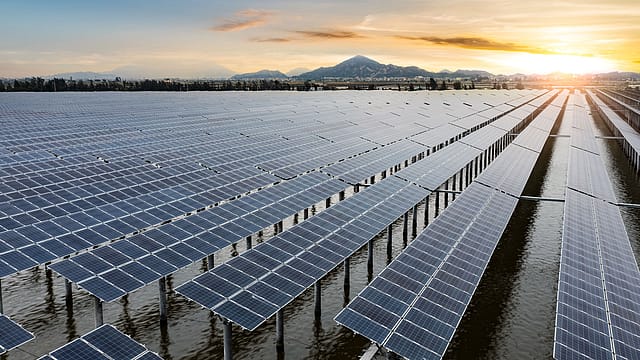Delays slash solar capacity addition 53% in H1 2023
ADVERTISEMENT

India's ambitious renewable energy capacity addition of 500 gigawatt by 2030 got a temporary jolt as new capacity additions fell by 53% in the first six months of 2023 to 3.6 gigawatt (GW), compared to 7.6 GW installed in the first half of 2022.
This was mainly due to delay in commissioning of large scale utility solar projects in 2023, compared to big capacity commissioning during the same time last year after many projects that got delayed during Covid-19 got commissioned post the pandemic. Now India's cumulative installed solar capacity, including total rooftop solar installations, is more than 66 GW as of June 2023.
Extensions were granted to several large-scale solar projects and those facing delays due to land and transmission issues affected installations in the first half of 2023. Several projects stuck in the habitat of the Great Indian Bustard (GIB) in Gujarat and Rajasthan are still waiting for the Supreme Court order to receive transmission connectivity. Recently, the Ministry of New and Renewable Energy (MNRE) revoked the blanket extension applicable to projects in the GIB area. The issue was the birds with huge wings got electrocuted due to transmission lines and remedial suggestions were mainly to set up underground cables, an expensive option.
Following a weak first quarter, capacity additions slowed further in the second quarter of this year as India added 1.7 GW of solar capacity in the second quarter (Q2) of 2023. New Installations dropped more than 10% quarter-over-quarter (QoQ) compared to 1.9 GW installed in Q1 2023 and by almost 58% year-over-year (YoY) compared to 4 GW in Q2 2022, says an India Solar Market Update by Mercom India Research, an agency tracking global renewable energy. With commissioning challenges and project extensions, Mercom expects solar installations to be significantly lower in 2023 compared to the record 13 GW added in 2022.
December 2025
The annual Fortune 500 India list, the definitive compendium of corporate performance, is out. This year, the cumulative revenue of the Fortune 500 India companies has breached $2 trillion for the first time. Plus, find out which are the Best B-schools in India.
"Delays, extensions, and postponements have led to a substantial number of solar projects being deferred to the next year, making 2023 a year of setbacks for solar in India," says Raj Prabhu, CEO of Mercom Capital Group.
Large-scale solar projects accounted for 77% of capacity added in Q2 2023, with rooftop solar making up the rest (23%). Over 1.3 GW of large-scale solar were added in the quarter, down 7% quarter-on-quarter and 64% year-on-year.
The country's utility-scale project development pipeline stood at over 67 GW as of June 2023, with an additional 62 GW of projects tendered awaiting auction, said the report.
With projects delayed this year, 2024 looks extremely robust and rapidly declining solar components and project costs will be a catalyst for additional growth, says Prabhu.
